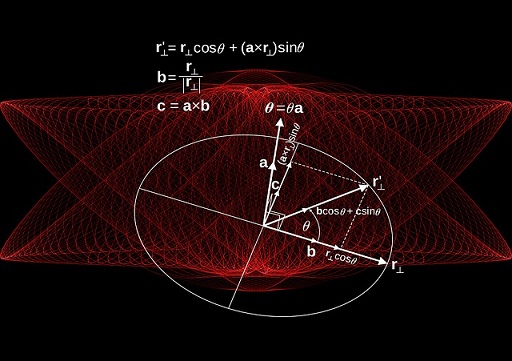階乗と二重階乗
階乗とは次式で定義される演算です。
\[n!=n\,(n-1)\,(n-2) \cdots 2 \cdot 1, \quad 0!=1\]
たとえば、$5$ の階乗は
\[5!=5\cdot 4\cdot 3\cdot 2\cdot 1=120\]
のように計算します。階乗計算は単純な再帰アルゴリズムで実装できます:
\[f(n)=nf(n-1)\]
たとえば $4!$ を計算するときには、$f=4$ からスタートして、$f$ と自然数 $3,\ 2,\ 1$ の積を順次 $f$ 自身に代入していきます。
\[\begin{align*}&f=4\\[6pt]&f=f\times 3\\[6pt]&f=f\times 2\\[6pt]&f=f\times 1\end{align*}\]
Python で階乗関数を実装してみましょう。
# PYTHON_FACTORIAL
# In[1]
# 階乗関数
def fact(x):
if x == 0:
return 1
else:
return x * fact(x - 1)
print(fact(30))
# 265252859812191058636308480000000
math モジュールには階乗を計算する factorial() が用意されています。
# In[2] import math # 30の階乗を計算 val = math.factorial(30) print(val) # 265252859812191058636308480000000
二重階乗は
\[\begin{align*}n!!&=n\,(n-2)\,(n-4) \cdots 3 \cdot 1\quad (n=\mathrm{odd\:number})\\[6pt]n!!&=n\,(n-2)\,(n-4) \cdots 4 \cdot 2\quad (n=\mathrm{even\:number})\\[6pt]0!!&=(-1)!!=1\\[6pt]\end{align*}\]
によって定義されます。たとえば、$5$ の二重階乗を計算すると
\[5!!=5\cdot 3\cdot 1=15\]
となります。
math.factorial()
math.factorial(x) は x の階乗を返します。
引数 x に非整数や負数を渡すと ValueError を返します。
# MATH_FACTORIAL # In[1] # mathモジュールをインポート import math # 10の階乗を計算 val = math.factorial(10) print(val) # 3628800
scipy.special.factorial()
scipy.special.factorial() は整数 n を受け取ってn の階乗を返します。デフォルト (exact = False) では処理速度を優先して近似計算を実行しますが、exact に True を渡すと正確な値を返します。
# SCIPY_FACTORIAL # In[1] from scipy import special n = 50 # n!を近似計算 val = special.factorial(n) print(val) # 3.041409320171338e+64 # In[2] # n!の正確な値を計算 val = special.factorial(n, True) print(val) # 30414093201713378043612608166064768844377641568960512000000000000
mpmath.factorial()
mpmath.factorial() あるいは mpmath.fac() を使うと、任意精度で階乗計算を実行できます。
# MPMATH_FACTORIAL # In[1] from mpmath import * # 精度を10桁に設定 mp.dps = 10 # 10の階乗 x = factorial(10) print(x) # 3628800.0
引数に巨大数を受け取った場合は、スターリングの近似公式を使って階乗の近似値を計算します。
# In[2] # スターリングの公式を使って巨大数の階乗を計算 x = factorial(10**15) print(x) # 1.178796412e+14565705518096756
mpmath.fac2()
mpmath.fac2(x) は $x$ の二重階乗 $x!!$ を返します。
# PYTHON_FACTORIAL_2 # In[1] from mpmath import * # 精度を10桁に設定 mp.dps = 10 # 15!!を計算 val = fac2(15) print(val) # 2027025.0
sympy.factorial()
sympy.factorial(x) は x の階乗を返します。
# SYMPY_FACTORIAL # In[1] import sympy # 10!を計算 val = sympy.factorial(10) print(val) # 362880
SymPy は記号計算に対応するパッケージなので、引数に文字式を渡すと factorial オブジェクトが生成されます。
# In[2]
# 記号nを定義
sympy.var('n')
# (n+2)!を計算
s = sympy.factorial(n + 2)
print(s)
# factorial(n + 2)
$(n+2)!$ を $n!$ で割ると $(n+2)(n+1)$ になることを確認してみましょう。
# In[3] # n!を計算 t = sympy.factorial(n) # (n+2)!をn!で割って数式を簡略化する expr = sympy.simplify(s/t) print(expr) # (n + 1)*(n + 2)
sympy.factorial2()
sympy.factorial2(x) は x の 二重階乗 を返します。
# SYMPY_FACTORIAL_2 # In[1] import sympy # 10の二重階乗を計算 val = sympy.factorial2(10) print(val) # 3840

コメント